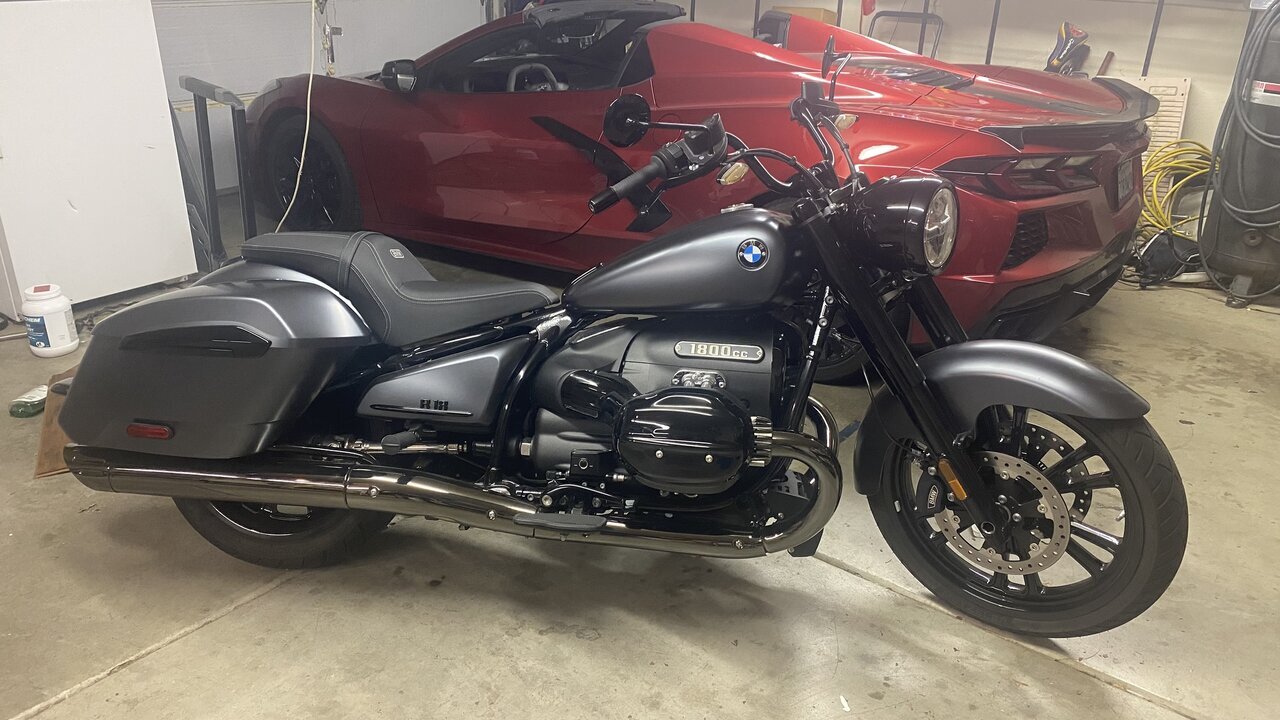That should help. My Electra
Glide and Fatbob cooked my ass.
Just let me know how your legs feel on a summer day while stuck in traffic on the Benicia Bridge. Ask me how I know. lol
I know, safety first.... But it hit me yesterday while I was riding around in shorts. Also, those big ass boxer jugs sticking out on the sides protected me from bugs slamming into my legs. Who would have thought?
I haven't tested it out in the Wendy's Drive-Thru yet.
While the Milwaukee-Eight (M8) engine has several design improvements, the perception of whether it runs cooler than previous Harley-Davidson motors, particularly the Twin Cam, is nuanced. Here's a breakdown:
Improvements in the Milwaukee-Eight for Heat Management:
* Precision Cooling: M8 engines utilize a more targeted cooling strategy. Depending on the model, this involves either oil or liquid coolant being circulated around the hottest areas of the cylinder heads to dissipate heat more effectively.
* Redesigned Exhaust: The rear exhaust pipe has been repositioned, and the catalytic converter has been relocated to move heat away from the passenger, improving rider comfort.
* Lower Idle Speed: The idle speed has been reduced from 1,000 RPM to 850 RPM, which can contribute to less heat generated when the bike is stationary.
* Engine Idle Temperature Management System (EITMS): This system, available on many Harley-Davidson models since 2008 (including Twin Cams from 2008-2016 and all M8 models from 2017 onwards), can automatically shut off the rear cylinder at idle in high-temperature conditions to help cool the engine.
Perception of Running Hot:
* Despite these improvements, some riders still perceive the M8 engine as running hot. This could be due to several factors:
* Higher Factory Temperature Readings: The temperature sensor on the M8 engine is located in a different position than on the Twin Cam, which can result in higher temperature readings displayed, even if the overall metal temperature isn't drastically different.
* Leaner Fueling for Emissions: Like the later Twin Cam engines, the M8 is designed to run leaner to meet stricter emissions regulations. Leaner air-fuel mixtures burn hotter.
* Engine Design: Air-cooled V-twin engines, by nature, generate a significant amount of heat, especially in stop-and-go traffic or hot weather.
* Subjective Rider Comfort: Even if the engine's operating temperature is within the normal range, the heat radiated towards the rider can still be perceived as uncomfortable.
Operating Temperatures:
* According to some sources, the typical everyday warm weather riding engine temperature (as measured by the factory sensor) for a Milwaukee-Eight is around 260°F (with a maximum of 270°F before sluggishness and accelerated wear may occur). For a Twin Cam, this was around 230°F (with a maximum of 240°F). This difference in sensor location contributes to the higher readings on the M8.
* Normal oil temperatures for both Twin Cam and M8 engines are suggested to be around 230°F, with a maximum of 240°F.
Cooling Solutions:
* Many aftermarket solutions exist to help cool down both Twin Cam and Milwaukee-Eight engines, including:
* Oil Coolers (with or without fans): These help dissipate heat from the engine oil.
* Fan-assisted Oil Coolers: These provide active cooling, especially at lower speeds or when idling.
* Removal of Catalytic Converters: This can significantly reduce felt heat, although it may not drastically decrease engine temperature.
* Improved Airflow: Modifications like removing thigh protectors or fork wings (in warmer temperatures) can improve air circulation around the engine.
* Synthetic Oils: While synthetic oils may not necessarily make the engine run cooler, they can maintain their lubricating properties at higher temperatures compared to conventional oils.
In conclusion: The Milwaukee-Eight engine incorporates design improvements aimed at better heat management compared to previous engines. However, due to factors like sensor location and lean fuel mixtures, riders might still perceive them as running hot. The actual operating temperatures, when measured consistently, might not be drastically different, but the M8 often shows higher readings on the temperature gauge. Various aftermarket cooling solutions are available for riders seeking to further reduce engine heat.



